Return Journey: Europe and Asia,
August 17, 1872 – September 13, 1873
After spending over six months in the United States, the Iwakura Mission sailed out of the Boston port and headed for Europe. The mission spent considerably less time across the pond – many countries were toured in just two weeks. There were a few exceptions to this rapid pace, including Great Britain, where the delegates spent four months, and France, where they journeyed for three months. The delegates allocated four weeks for both Germany and Switzerland, and gave three weeks of their time to Italy.
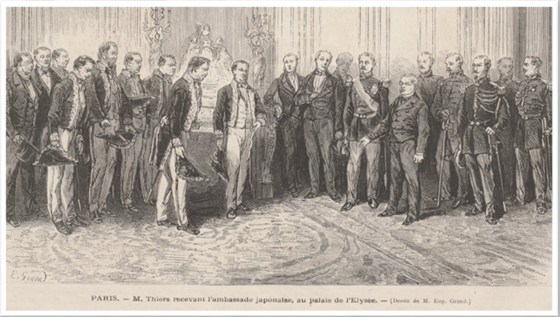
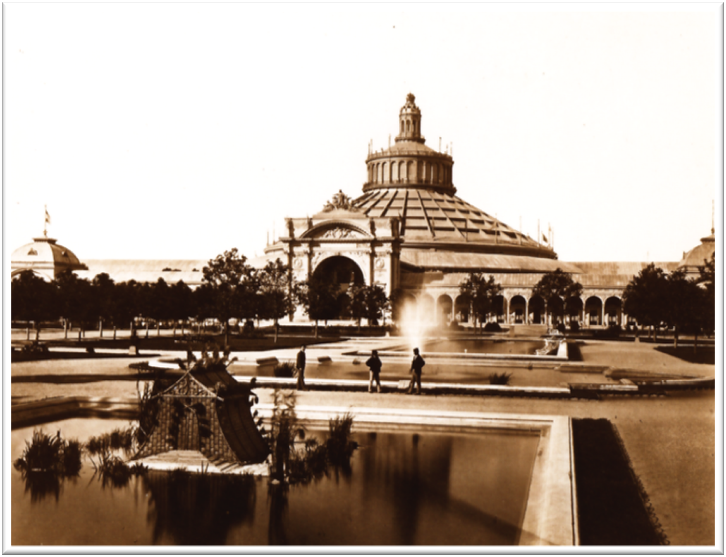
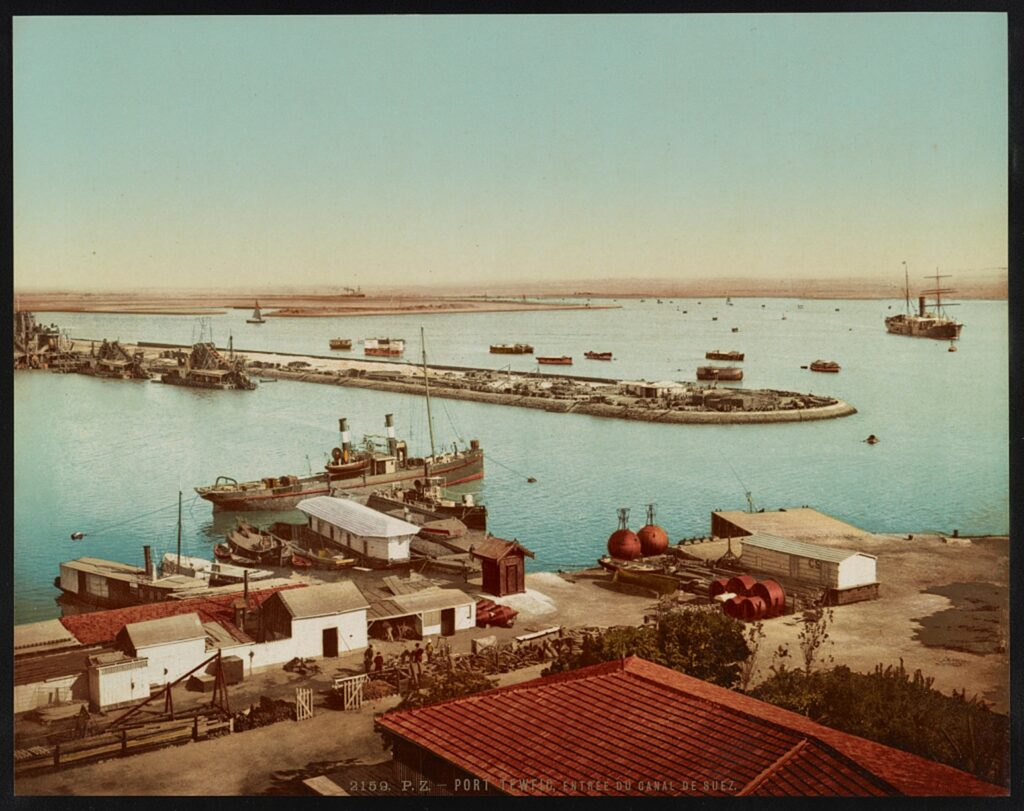
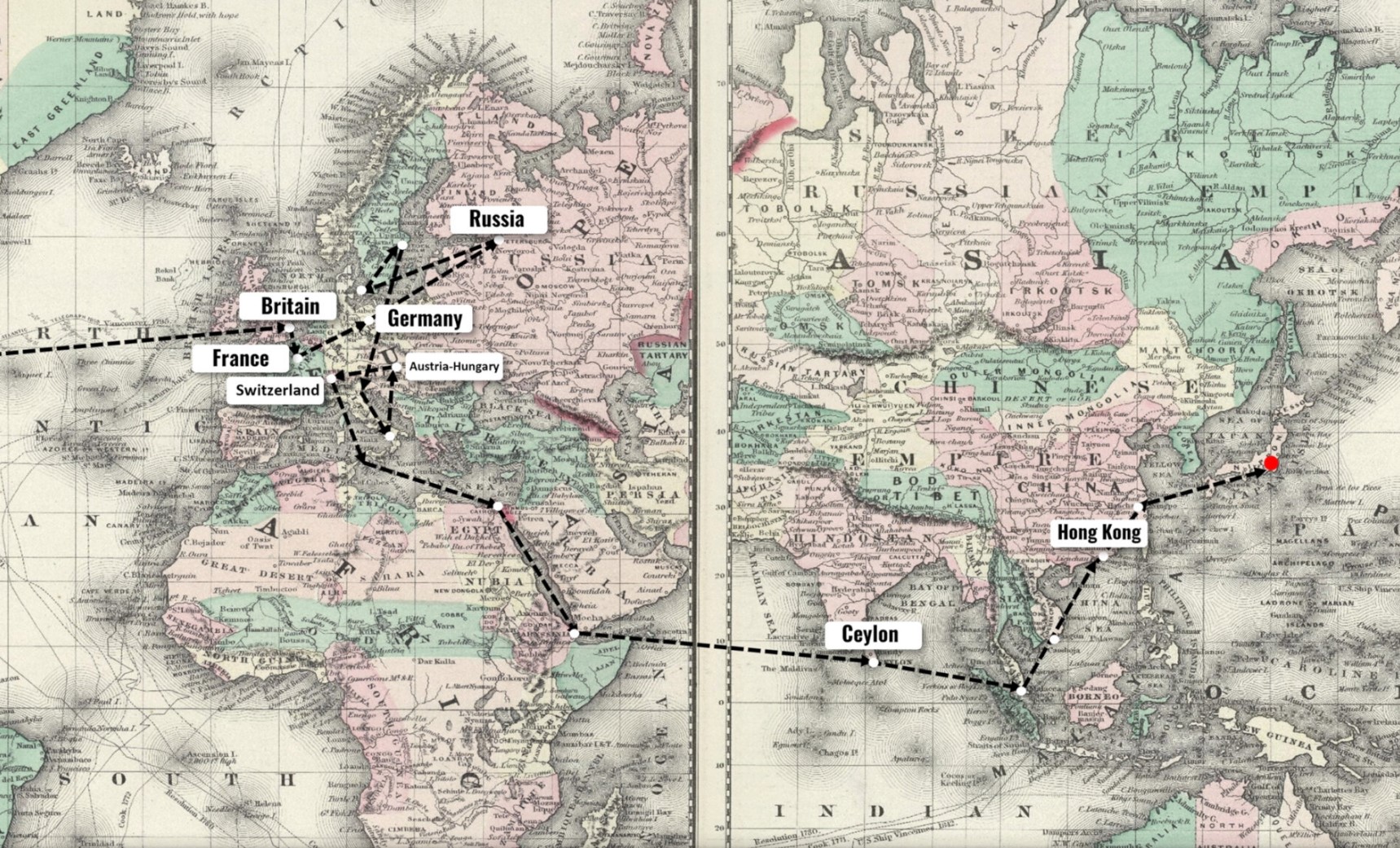
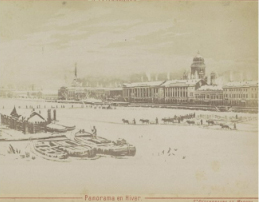
Summary: On April 5, 1874, the delegation walked across the frozen waters of the Neva River to the Peter-Paul Fortress in St. Petersburg. This was the delegations' first experience with the sub-freezing temperatures of northern Europe and Kume was shocked that the three-foot ice could support horse-drawn sleighs. (Kume 337)
Image: View of banks along the frozen Neva River in St. Petersburg, Between 1880-1900, Source: Leporello album (RP- F-F26715), Rijks Museum.
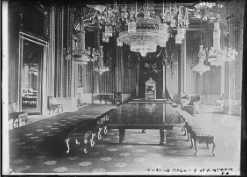
Summary: After arriving in Liverpool on August 17, 1872, the group spent the next four months visiting various political institutions, industrial centers, and academic institutions across the country. Moreover, after visits to the British
Museum and the new London Underground, the delegation was granted an audience with Queen Victoria on December 5, 1872. They also paid their respects to the Prince of Wales a few
days later before leaving for France. (Kume, 208)
Image: Throne room, Buckingham Palace, 1900, Source: Library of Congress.
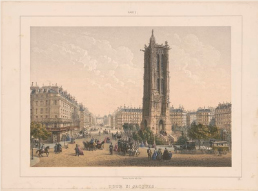
Summary: The delegates visited several cultural, industrial, and welfare
institutions while in France. From bread and porcelain factories to the national library in Paris, the group were thoroughly impressed by France, and Kume remarked that the country was surely the most advanced out of the European countries. (Kume, 213)
Image: Street level view of Tour Saint- Jacques, Paris, France, Between 1870 and 1879, Source: Library of Congress.
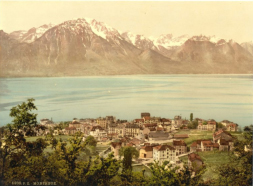
Summary: The Mission was very impressed by Switzerland's majestic mountains and vibrant cities nestled on lakes and rivers. (Kume 447)
Image: Photochrom print of Geneva Lake, Switzerland, Between 1890 and 1900, Source: Library of Congress.
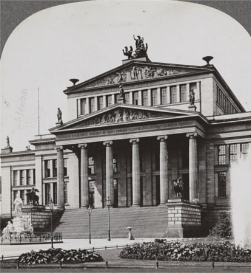
Summary: Although the crux of the mission lay in utilitarian matters, the Iwakura Mission greatly enjoyed their bushes with Wester art, music, and theater, thus deepening their appreciate of traditional national art. While in the German Empire, the delegates attended an opera for the first time at the Imperial Theater in Berlin on March 11, 1873. Kume noted that the musical drama held many similarities to Japan's own classical Noh theater. (Kume, 301)
Image: The Royal Theater, Berlin, Germany, 1903, Source: Library of Congress.
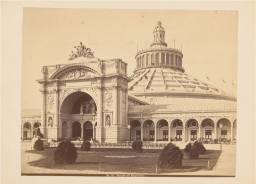
Summary: The Mission attended the 1873 Vienna World's Fair, hosted by the Austria-Hungarian capital of Vienna. Attended by over 7 million people and featuring 36 nations and 19 colonies, the delegates were struck by the size and breadth of the numerous exhibitions. Regardless of size or power, Kume observed an independent spirit in many of the countries' exhibitions and reflected on how Japan could emulate these ambitions. (Kume 466)
Image: Rotunde with main entrance at the 1873 World's Fair in Vienna, 1873,
Source: Rijks Museum.
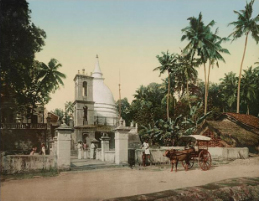
Summary: The group arrived at the island of Cylon on August, 9, 1873. They were greatly impressed by the Buddhist Atapattu Vihara Temple and the Bonavista Temple. Later that night, they walked on the beach under a dazzling moonlight sky. (Kume 501)
Image: Temple of Buddha on the Road to Gall, Ceylon, Between 1890 and 1910, Source: Library of Congess.

Summary: The group arrived in Hong Kong on August 27, 1873. The city was ceded to Britain in 1841 and the delegation, fresh from their journey across Europe, could easily distinguish the British and other European influences on much of the architecture. In particular, Kume noticed that European stylings often used gold and pearls, which provided a bright contrast to the vermilion Chinese aesthetics. (Kume 517)
Image: Street level view of Hong Kong, 1895, Source: Library of Congress.
